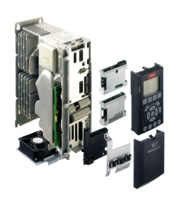In several discussions I’ve had with customers over the years, the topic of expected Lifetime has come up. The concern for a products reliability as expressed by Lifetime is a natural part of the evaluation. Lifetime is however not the only matter to consider, when evaluating reliability, the total cost of a product over its entire life time should also be part of the evaluation, including down time for maintenance.
When including a specific requirement, ex. 10 years product Lifetime, in a specification, it is important to consider the operating conditions under which this applies, as most products can likely meet almost any requirement, if there is no specification of the operating conditions.
What is Lifetime
When talking about products, it is more sensible to talk about service life. Service life is the time period that the manufacturer expects the product to remain in service without any catastrophic failure based on reasonable standard conditions for the average customer base of the manufacturer. It is mostly based on internal design rules and component estimates and is derived as a reasonable average time period, where full operation can be expected.
It is very different from the predicted time between failures, which is mostly addressed as “Mean Time Between Failure” (MTBF) or “Maintenance Free Operating Period” (MFOP). Predicted life uses hypothetical modelling and calculation to predict the expected number of operating hours under a specific use case scenario. This is to be considered an operating time rather than a lifetime.
Complexity of the Product
The more complex a product is and the more components it consist of, the higher the risk of failure and subsequently the higher the risk that Lifetime will be shorter.
If we look at the failure rate for a screw, then this will typically be measured as a very low ppm rate as the component is used in millions with the exact same specification and it is in itself only one part. Specifying the Lifetime will also be a relatively simple matter of evaluating the environment where the screw is used, the forces it will be subjected to and selecting the type, material and size to match these.
 If on the other hand we look at a variable frequency drive, the complexity is much higher. Several screws are used in the assembly and even more electrical components. While each component has a very low failure rate, which would be at the level of the screw, this will not be the case for the VFD.
If on the other hand we look at a variable frequency drive, the complexity is much higher. Several screws are used in the assembly and even more electrical components. While each component has a very low failure rate, which would be at the level of the screw, this will not be the case for the VFD.
It is a fact that when you have one component of 50 ppm failure rate, we know what to expect. At the same time when we have several hundred components, then predicting the combined failure rate becomes much more difficult. We do however know for sure that the rate will be several times higher. A minor defect in one component, like a screw not able to hold 100% the torque, would for the individual component not cause a failure. If the screw holds the power module of a variable frequency drive to the heat sink, the power module may now fail because it doesn’t have sufficient cooling anymore and this could cause a catastrophic failure in the drive.
Environmental Impact
For a screw it is relatively easy to specify the environment. When you look at a variable frequency drive, the impacts come from several sources:
- Ambient (e.g. temperature, humidity, corrosive agents, weather and debris)
- Electrical grid (e.g. high/low voltage, transients, imbalance, ground faults)
- Load (e.g. ground fault, over load, short circuit, shock load, frequent start/stop, aggressive start/stop ramps and speed profile)
- Installation (e.g. wrong torque on connectors causing sparking and EMC issues)
This makes it extremely difficult to predict failure rate and thereby also the Lifetime of the VFD. It is crucial to make a clear environmental specification and consult manufacturers’ documentation to understand what limitations have been set for the calculated Lifetime.
Practical Example
Looking at some practical examples, below are actual extracts from VFD manufacturers’ documentation:
- Manufacturer A – 10 Years Lifetime – Operation conditions:
- 80% Load
- 5 days per week
- 8 hours per day
- 220 days per year
- Manufacturer B – 10 Years Lifetime – Operation conditions:
- 100% Load
- 7 days per week
- 24 hours per day
- 365 days per year
Both manufacturers comply with the specification requirement of 10 years product Lifetime, but depending on the application, Manufacturer A may in reality not fulfil the required Lifetime.
Most pump applications run critical applications like water supply or control the heat of a building. In most cases the running time of the application is 24 hours per day, 365 days per year, but the average load is likely less than 80%. If we assume an average load of 70%, then determining if Manufacture A complies with 10 years Lifetime is difficult, since we don’t know how this change in load affects the Lifetime.
Only manufacturer, who for sure complies with the specification on Lifetime would be Manufacturer B, who would have more than 10 years Lifetime and as such is over specified for the application, which will likely also mean that the product is a little more expensive as the longer Lifetime can mostly only be reached by use of higher rated components in the VFD.
What’s included?
Another aspect of the specification of Lifetime is what is included in the Lifetime specification. If we take a look at manufacturer A and B again, we will see other significant differences:
- Manufacturer A – 10 Years Lifetime – Serviceable items:
- Exchange fan: 2 years or XX hours of operation
- Exchange capacitors: 3 years or XX hours of operation
- Manufacturer B – 10 Years Lifetime – Serviceable items:
- All components are specified for product Lifetime
From a life cycle cost analysis it makes a huge difference that Manufacturer A require that fans and capacitors are exchanged at regular intervals. While fans can often be exchanged relatively easily and sometimes even without interrupting operation, the exchange of capacitors require a visit from a service technician, adding significant more cost than just the component cost and will interrupt operation, so loss of production for the service visit must be included in the life cycle cost calculation.
Conclusion
It’s important to get the exact specification for the claimed Lifetime. Is this in fact “Maintenance Free Operating Period” (MFOP) and is it valid for the operating conditions of the application.
If not, then actual life time expectancy should be requested from the manufacturer based on the application conditions. If this cannot be provided, then a consideration needs to be made if this manufacturer actually meets the specification and qualify for the bid.
If this is not investigated properly, then the risk of premature failure or increased maintenance cost is very high.





Please also read part two of this blog on product robustness… http://test.empoweringpumps.com/a-lifetime-of-confusion-part-two/